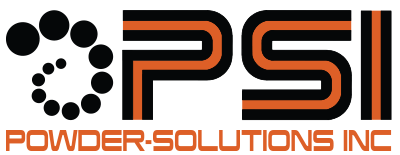Food Safety: Processing Flour, Sugar & Other Powdered Staple
For people requiring special diets due to food allergies food package labels warn that, while the item may be gluten free, for example, it was processed on equipment that also may have handled wheat, nuts and so on. It’s nearly impossible to guarantee the absence of cross-contamination in any product and to meet every dietary requirement.
When it comes to processing products for human consumption, like flour, sugar and other powdered products, there are strict safety and sanitation requirements that industrial plants must follow. One way to eliminate these concerns is to use food grade flexible connectors, like the BFM fitting®, which are safe, sanitary and offer snap-on efficiency.
Here’s an overview of both preventive measures processing plants may take and the more stringent government mandated requirements that work to ensure the food industry’s commitment to keeping our food safe and us healthy.
Prevention-Based Food Safety
1) Hazard Analysis & Critical Control Point (HACCP) identifies, monitors and prevents specific food safety hazards that will adversely affect the safety of food products unless properly managed. HACCP plans identify potential food safety hazards so that key actions can be taken to reduce or eliminate the risk of those hazards. Prevention is the most effective means of ensuring food safety. More than 150 countries have adopted HACCP, making it the global standard in food safety programs.
2) Good Manufacturing Practices (GMPs) address the methods, equipment, facilities, and controls for producing processed food. As sanitary and processing standards for producing safe and wholesome food, GMPs are an important part of regulatory control over the safety of the nation’s food supply. GMPs also serve as one basis for U.S. Food and Drug Administration (FDA) inspections.
3) Self-audits performed routinely ensure that the programs in place are being followed and monitored correctly. Independent third-party auditors verify that the procedures stated in the programs are being followed. They also perform a physical inspection of the facility to ensure that the programs and procedures are reflective of industry and company standards and requirements.
Government Regulated Food Safety
OSHA and FDA both set regulations for fine powdered food processing facilities which drive safety design and construction.
OSHA standards set worker and operational safety and are considered a minimum that must be met for nonpublic operational areas. They cover a number of construction related issues such as access, exits, fixed ladder construction, stairs, ships ladders, guardrails, equipment access and tunnel construction.
The FDA regulates requirements of food related operations for the manufacturing, packaging and holding practices in food production facilities. For our purposes, we’ll only discuss food plant safety.
FDA & Food Safety: Minimizing Food Contamination
Facility Construction. The building must be constructed in a way such that floors walls and ceilings can be easily cleaned and that construction materials are durable and easy to clean. Floor drains should be provided in wash down areas. Ducts and pipes must be located where they cannot contaminate food from condensation or falling debris. Adequate space should be provided between equipment and walls for cleaning.
Water Waste Treatment. A facility must maintain an operating system for waste treatment. There must be a potable water supply and adequate plumbing. Rubbish and disposal of viscera must be provided for. There must also be a suitable dry and wet waste disposal system depending on the processing method. Adequate toilet and hand washing facilities must be available to employees.
Lighting & Ventilation. Adequate ventilation and control equipment must be in place to minimize odors and vapors (including steam and noxious fumes) in areas where they may contaminate food. The FDA also requires that fans and other air-blowing equipment are located in a manner that minimizes the potential for contaminating food, food packaging materials and food-contact surfaces.
Operational Safety. Other operational aspects that a facilities manager needs to consider include cleaning/sanitizing of the physical plant, utensils and equipment, storing cleaning and sanitizing products and materials, pest control, and maintenance and repair.
Not So Brief Overview
As you can see from this not so brief “overview,” there is much a plant owner can do on both a self-regulating basis and in following state and federal regulations to ensure food safety. Care must be taken in all aspects of the layout, design and operation of a bulk food processing plant in order to establish and maintain the maximum safety and functionality of and for the physical plant. These safeguards will go a long way toward minimizing food borne illnesses and worker safety.

